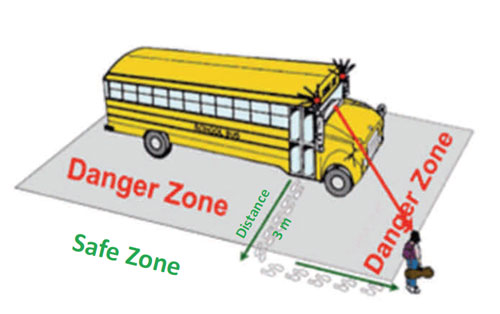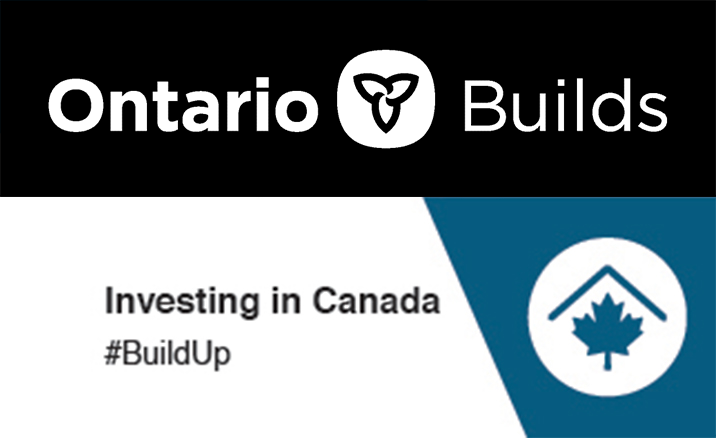
Download the School Bus Safety sheet to print or distribute. You can also link to this page to share.
Every school day, Student Transportation Services of Waterloo Region (STSWR) is responsible for the safe transportation of over 30,000 Waterloo Region District School Board students to and from school on close to 635 school bus routes and on municipal transit and in taxis.
At the bus stop
- organize and adequately secure belongings before leaving home;
- arrive at the designated pick‐up point 5 minutes ahead of the scheduled pick‐up time as times can fluctuate due to traffic;
- wait in an orderly fashion well back from the side of the road;
- have an alternate arrangement in place should your child miss the bus;
- check STSWR website or subscribe to receive notifications of bus delays and cancellations;
- respect the private property at the bus stop;
- recognize that a danger zone exists in the immediate vicinity of school buses;
- if children need to cross the road to board the bus, wait until the bus arrives with lights flashing, continue to wait for the driver to signal that it’s safe to cross, then safely proceed across the road.
Riding school vehicles
Students must:
- board the vehicle in single file;
- walk directly to their seat as specified by the driver and sit down;
- remain seated until ready to leave the school vehicle;
- never smoke, eat or drink on the school vehicle;
- keep backpacks on their lap and keep aisles clear at all times;
- avoid distracting or disturbing the driver;
- open windows only with driver’s permission and keep hands, feet, arms and head inside the school vehicle;
- never throw objects inside the school vehicle or out the windows;
- promptly obey the driver’s directions (or the direction of the school safety patrol, if present);
- use emergency equipment or exits only in the case of genuine emergency.
School bus danger zone

The safe zone is 3 metres (or more) from the bus. Anything and anyone within 3 metres of the bus is in the danger zone.
Getting off school vehicles
Students must:
- have their belongings organized and adequately secured before arriving at their stop;
- remain seated until the vehicle comes to a full stop;
- walk to the front of the vehicle and use the handrail while exiting in single file;
- get off the vehicle only at their designated stop unless permission is granted by the principal;
- immediately move away from the vehicle, recognizing the danger zone close to the vehicle;
- when required to cross the road establish full eye contact with the driver, wait for the driver to signal, check traffic in both directions and then cross the road in front of the school vehicle.
- Never stop to pick up anything dropped in the danger zone— ask an adult or the bus driver for help.
- parents of kindergarten students are required to come to the bus door and ask for the child by name or arrange for a caregiver or appropriately-aged sibling to do so in order to promote safe dismissal.
When safety rules are broken
It is essential parents/guardians support enforcement of school bus safety rules. When student behaviour is inappropriate:
- the driver first talks with the student;
- if the student does not co‐operate, the driver reports the student to the principal, detailing the incident; the driver continues to seek student co‐operation;
- the principal records all such reports and takes whatever corrective action is warranted; this could include suspension of transportation privileges.
School bus drivers
School bus drivers are dedicated professionals who must meet Ministry of Transportation standards. In addition to student safety and behaviour, they must deal with all types of weather and traffic conditions, other motorists and the danger zone around their own vehicle.
School vehicles
School vehicles used to transport students must meet federal and provincial standards and all licensing requirements. They are subjected to mechanical safety inspections twice annually and drivers do a daily circle check before starting out.
All vehicles have two‐way radios and local bus companies maintain radio contact while vehicles are on the road.
School buses are large vehicles which require more space to manoeuvre. Large mirrors are required to assist drivers with blind spots. The Ontario Highway Traffic Act requires motorists to stop when the school bus flashing overhead lights and stop arm
are activated.
Most students are transported on conventional school buses, but school purpose vehicles, taxis and para‐transit services are also used.
Special needs units, school purpose vehicles, vans and taxis are equipped with seat belts although school and transit buses are not. Passenger loads are designed to provide a seat space for each student on a school bus. Public transit permits standing on buses.
Categories: Schools

